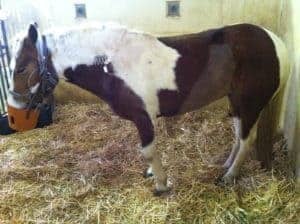
What is Big-Head Disease?
This condition, caused by an unbalanced diet, can have serious musculoskeletal implications for affected horses.

This condition, caused by an unbalanced diet, can have serious musculoskeletal implications for affected horses.

So far this year WEVA has held meetings in Heilan and Beijing, China; Cluj-Napoca, Romania; and Moscow, Russia.

Causes of epistaxis—bleeding from the nose—can range from mild to life-threatening conditions. Here’s what to know.

Be mindful of the associated health risks and understand how to best manage your horse before and after air travel.

For years veterinarians’ options were limited, but new products are helping them control horses’ pain better than ever.
Learn about the wild horses and how a nonprofit organization and a veterinary association are working to protect them.

Frozen semen offers many advantages, but it is important to understand that not all frozen semen is the same.

The statement summarizes the current knowledge about ulcers and is designed to provide guidelines for veterinarians.

Domestic horses’ reproductive efficiency is often lower than that of feral horses. Does modern husbandry play a role?
Lecture topics included angular and flexural limb deformities, diagnosing and imaging hoof problems, and more.

This potentially deadly condition affects grazing horses. Learn about its clinical signs, treatments, and prognosis.

Anhidrotic horses don’t sweat well or at all, which can be dangerous in warm climates. Here’s what to watch for.

Learn how researchers determined that hairy, bristly caterpillars can cause abortions and how to protect mares.

Bone is a vital tissue that’s densely packed with specialized cells and supplied with a rich network of blood vessels.

Researchers at the University of Bern are studying cardiac adaptations to training in eventing and endurance horses.

Learn about the cardiac abnormality one veterinarian identified during a prepurchase exam and if it was a deal breaker.
Stay on top of the most recent Horse Health news with